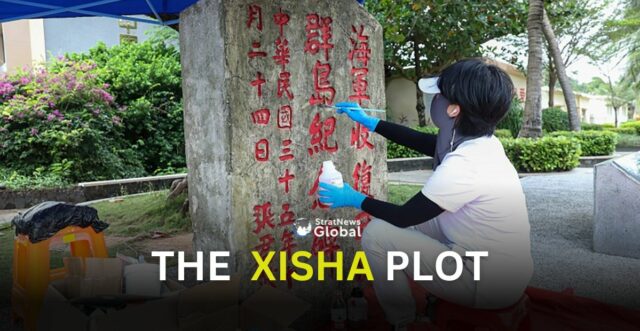China has begun restoring a historic stone marker on Woody Island in the Paracel chain as part of a wider effort to reinforce its sovereignty claims in the South China Sea.
According to the South China Morning Post, conservation experts from the Hainan Provincial Institute of Cultural Relics and Archaeology spent nearly a week repairing the Xisha Recovery Monument, which commemorates China’s post–World War II takeover of the Paracel Islands. The marker, first erected in 1946 by the Kuomintang government, had weakened over decades of exposure to the island’s harsh climate.
Specialists used modern tools to strengthen the monument’s structure and clean its surface, with officials saying that regular maintenance will follow. Sansha authorities described the stone marker as “a powerful testament to China’s restoration of sovereignty over the South China Sea islands following the illegal occupation by Japan during World War II.”
Woody Island—known in China as Yongxing Island and administered as part of Sansha City since 2012—is the largest of the Paracel Islands, which are also claimed by Vietnam. The Spratly Islands farther south are contested by several Southeast Asian nations.
China has stepped up cultural and archaeological work in recent years to document what it says is its historical presence in the region. Beijing has invested in underwater archaeology and opened a dedicated centre in Hainan in 2023 after recovering relics, including porcelain and coins, from deep-sea shipwrecks.
China’s claims faced a major setback in 2016 when an international tribunal in The Hague ruled against its assertion of “historic rights” in a case brought by the Philippines. Beijing rejected the ruling, but the verdict continues to challenge its position.
The restoration of the Xisha Recovery Monument is the latest move in Beijing’s campaign to highlight historical artefacts as part of its broader South China Sea strategy.





